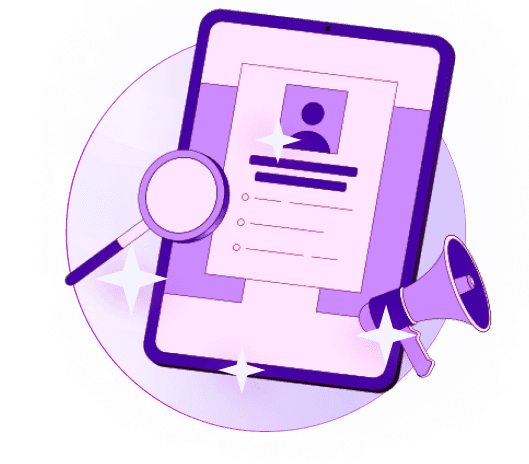Blogs
Articles

What Is Outside Sales? The Ultimate Guide
Outside sales shows remarkable results in 2024. Representatives close 30.2% more deals than their inside sales counterparts. Their transactions are also 130% larger on average. Face-to-face selling proves highly effective for businesses of all sizes, even with digital selling platforms on the rise.
The profession comes with its share of challenges. Sales professionals say prospecting is their biggest problem - 42% of them struggle with it. Outside sales representatives spend just 35% of their time selling. Non-revenue tasks take up the other 65%. The role's independent nature means excellent time management skills are essential.
This piece covers everything about outside sales. You'll learn the basics and see what makes inside and outside sales different. Maybe you want to change careers and earn around $80,944 yearly. Or perhaps you need to improve your current sales approach. Either way, this practical guide will set you up for success in 2025 and beyond.
What does outside sales mean?
Sales representatives leave their office to meet prospects and customers face-to-face in the field. This practice defines "outside sales". Personal interactions happen at client locations, industry events, trade shows, and other external settings, unlike remote selling methods.
Outside sales representatives travel most of their time to meet potential buyers. They build relationships through direct contact and close deals in person. These field salespeople work independently without a formal office or team environment. They handle specific geographic territories and work flexible schedules that line up with their clients' availability. Their work often extends beyond standard business hours.
Face-to-face meetings give sales representatives a chance to demonstrate products hands-on. They can build deeper relationships and customize their approach, which works especially well for complex solutions. Sales professionals in the field earn 12-18% more than their inside sales counterparts, even with the extra costs of this model.
Companies invest heavily to maintain an outside sales force. They pay for their representatives' travel miles, accommodations, meals, and client entertainment. Outside sales teams focus on high-value prospects because of these expenses. They also work with longer sales cycles where potential returns justify the costs.
Outside sales representatives spend their days:
Meeting clients at their offices or other convenient locations
Attending networking events, conferences, and trade shows
Conducting on-site presentations and product demonstrations
Building and nurturing personal relationships with decision-makers
Negotiating and closing deals during face-to-face meetings
Is B2B outside sales?
B2B (business-to-business) outside sales focuses on selling to other businesses instead of individual consumers. Sales representatives travel to meet corporate decision-makers at their offices, industry events, or other locations.
B2B outside sales works best with complex solutions that need detailed consultation and hands-on demonstrations. This approach excels when products or services need multiple stakeholders. It also works well for substantial financial investments, multi-year commitments, or combined product-service offerings.
Many industries use this model including enterprise software, IT services, manufacturing, medical devices, and industrial solutions. Field sales representatives in B2B must be fluent in building quick relationships with prospects. They set face-to-face meetings, work on their own, and travel whenever needed.
What is the difference between inside and outside sales?
The previous sections covered what outside sales entails. Now let's get into the main differences between inside and outside sales approaches in several significant areas.
Location creates the basic difference between these approaches. Inside sales reps work remotely through phone, email, and video calls. Outside sales representatives meet clients face-to-face in the field. This difference affects everything from costs to closing rates.
Prospecting and lead discovery
Digital channels help inside sales teams generate more leads quickly. Outside sales reps develop deeper relationships that often lead to higher conversion rates. Field representatives can find nearby prospects while traveling between appointments using location-based tools. They maximize efficiency by finding potential clients close to existing customers while already on the road.
Territory and customer mapping
Geographic organization plays a vital role in outside sales. Representatives use specialized mapping tools like EasyTerritory and Badger Maps. These tools help them visualize territories, analyze field team performance, and line up territory boundaries. Sales increase by about 22% and driving time reduces by up to 20% with these applications.
Appointment setting and route planning
Outside sales teams often employ canvassers who visit businesses door-to-door to schedule meetings for sales representatives. Route planning becomes significant since outside reps spend about 21 hours driving each week. Modern mapping tools help representatives fit more meetings into each day by optimizing multi-stop routes.
Sales presentations and demos
Outside sales presentations require strong nonverbal communication skills and polished appearance because they happen in person. Face-to-face format aids product demonstrations and immediate question answering. Inside sales teams rely on technology for remote presentations instead.
Lead management and follow-ups
Both approaches need consistent follow-up. Studies reveal that 80% of sales need five follow-up calls. Yet 44% of reps give up after just one attempt. Outside sales reps capture 50% more customer data through field interactions using mobile mapping tools. This detailed information makes their follow-ups more effective.
The Outside Sales Process: Step-by-Step
A structured process that maximizes face-to-face selling opportunities leads to success in outside sales. My experience with industry practices has helped me identify six essential steps that create an effective outside sales cycle.
Research and Prospecting
The process starts with research to identify potential clients. This crucial first step helps determine target audiences and generate quality leads through referrals, advertisements, or lead generation forms. Smart representatives sort prospects by relevance. They can tell the difference between strong leads with sufficient budget and existing needs versus poor-fit opportunities from wrong industries or those with inadequate resources.
Discovery and Needs Assessment
The next step after prospecting involves scheduling office visits with qualified prospects. These visits let me meet their team, understand their operations, and create customized solutions for specific needs. We need to confirm that prospects have real buying potential before investing more time.
Connection and Appointment Setting
The next phase focuses on securing face-to-face meetings for meaningful conversations. Good territory mapping and route planning helps optimize travel time. Each appointment should give enough time to understand client needs and explain solution benefits.
Demonstration and Presentation
The value of your solution shines through tailored presentations when you meet prospects. Focus on real benefits like operational cost savings or improved efficiency instead of generic features. Face-to-face meetings work best because field representatives can answer questions right away and adjust demonstrations based on how clients react.
Handling Objections and Closing
Perfect presentations won't stop objections before closing deals. Budget concerns and contract terms often become major discussion points. Great outside sales representatives expect these challenges. They address concerns with confidence and guide conversations toward mutual agreement. Closing usually involves negotiation, finalizing terms, and getting formal commitment.
Regular practice helps refine this process and leads to better results.
What is an example of outside sales?
Let's look at some outside sales examples that show why face-to-face selling leads to closed deals across industries.
Sales representatives in pharmaceuticals are perfect examples of outside sales professionals. They visit doctors' offices, hospitals, and clinics to promote medications in person. These reps often present during lunch breaks. They bring samples, share clinical research data, and explain their products' advantages over competitors. Their personal interactions build trust with healthcare professionals and influence prescribing choices.
Medical device sales reps spend their time at healthcare facilities showing complex equipment. They run product demos, train staff, and explain their devices' benefits. They also work with administrators on contracts and give ongoing support.
Real estate stands out as another field where outside sales shine. Agents take buyers to properties, run showings, and handle offer negotiations in person. They share details about locations, amenities, and market trends. They also manage open houses where they connect with many potential buyers at once.
Sales professionals in industrial equipment meet factory managers and engineers right at their facilities. They check operations first-hand, spot challenges, run equipment demos, and create custom solutions based on what they see. These visits often lead to talks about customization and financing options.
A custom home audio systems sales rep's typical day looks like this:
Meeting new homeowners to assess installation requirements
Visiting partner electronics stores for referrals
Calling on existing customers for potential upgrades
Outside sales work well because reps can see environments first-hand and spot opportunities they'd miss in remote meetings.
Conclusion
The data tells a compelling story about outside sales and its remarkable results in our digital age. Sales representatives are closing 30.2% more deals and landing transactions 130% larger than their inside sales colleagues. This classic approach remains indispensable for companies that sell complex solutions, especially in B2B environments.
Success in outside sales depends on your ability to build relationships, manage territories, and work independently. The six steps we covered earlier provide a solid foundation—from detailed research and prospecting to proven closing techniques. Top performers who master these steps consistently stand out from their peers.
Modern outside sales relies heavily on technology. The best representatives use specialized tools to map territories, plan routes, and manage customer data. You can find affordable solutions to enhance your outside sales operations at Persana.ai.

Create Your Free Persana Account Today
Join 5000+ GTM leaders who are using Persana for their outbound needs.
How Persana increases your sales results
One of the most effective ways to ensure sales cycle consistency is by using AI-driven automation. A solution like Persana, and its AI SDR - Nia, helps you streamline significant parts of your sales process, including prospecting, outreach personalization, and follow-up.



